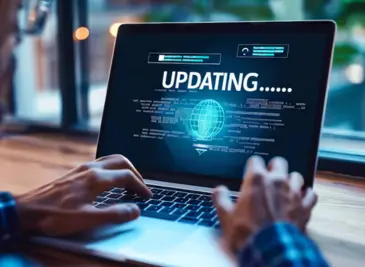With the increase in technology, the risk of cybercrime also increases, and it gets easier to breach the security and sensitives data that’s why you need the cybersecurity strategies to protect your business. As cybersecurity challenges escalate, there is a growing need for proper protection measures.
Bearing this in mind, we have come up with Top 5 proven Cybersecurity measures as cyber security testing methods that can help business with their cyber security. Let us move further to know all about the tips and we will also discuss how each tip will benefit you. By following these measures, you will be able to protect your business.
“5 Proven Cybersecurity Strategies to Protect Your Business"
Tip 1: Implement a Strong Firewall and Network Security
A good firewall and a secure network are essentials for protecting sensitive information. Here are some general steps that can be applied to strengthen your security:
• Using a VPN for secure remote access as it provides the encryption which saves the data from malicious attacks and one of the cyber security tools and techniques.
• Selecting the right firewall as per your needs from the wide range of firewalls such as hardware or software.
• Monitor Firewall Activity regularly to spot threats. Not only this, but firewall also requires audit and update frequently.
• Set Access Controls according to the requirements to only access sensitive data.
• Implementing Authentication and Encryption for extra security as a network security techniques.
• Block social engineering in cyber security as a preventive measure.
Tip 2: Use Multi-Factor Authentication (MFA) and Password Management
Implement Multi Factor Authentication or MFA and excellent password management to protect your business as a cyber security methods. Therefore, some of the major approaches a person can take is:
• Using complex passwords that will guard sensitive information, so no one is able to guess it easily.
• Changing the password frequently and in a regular interval helps in reducing the risk.
• Use tools like password management tools to safely store and manage passwords.
• Multi – step login is a feature which allows the user to go through additional steps to authenticate his identity for an added layer of security.


Tip 3: Keep Software and Systems Up-to-Date
Keeping your software and systems updated is critical as cyber security techniques. Let’s check out the reason why is it so important:
• Regular updates close vulnerabilities and helps with security patches through which hackers can exploit to gain access.
• Maintain antivirus software updated to prevent malware analysis in cyber security from infecting the system.
• The updates enhance the performance of the devices and also make them compatible with other software.
• Being current reduces the risks of infection by malware and security breach.
Tip 4: Train Employees on Cybersecurity Best Practices
Training the employees is one of the crucial elements of any cybersecurity plan. This will give you safety regarding classified information. Some of them include the following:
• Educate them about the risks in a company and how those cybercriminals target an enterprise.
• Proper training minimizes errors that might cause security breaches.
• Such a well-equipped employee will make your business worth trusting by your clients.
• Train employees on the identification of data breaches and phishing attacks and other forms of cyber attacks.
• Limit Access. Allow only the information required by the employees to do their job to be accessed by them.
Tip 5: Backup Data and Have an Incident Response Plan
Data backup and a robust incident response plan are the essentials for cybersecurity - both for data protection as well as business continuity. Here's why they are important:
Data Backup
• Protection Against Loss: Data is saved from loss because of cyberattacks, hardware failure, or human errors.
• Backups on Schedule: Ensure timely backups based on the significance of data.
• Redundancy: Store backups at multiple locations to ensure defence against disasters.
• Encryption: Protect the backups with an encryption method to prevent unauthorized access.
• Testing: The backups must be tested to ensure they can be recovered successfully.
• Automation: It automates the backup process to reduce human errors and to have consistency.
Incident Response Plan:
• Rapid Response: Respond quickly to risk management techniques in cyber security.
• Identify Weak Points: Identify your weaknesses and solutions to make your defences stronger.
• Employee Training: Includes programs educating employees on identifying and reporting security threats.
Conclusion
The most critical step for protection is being a shield of your business from cyber threats. These five effective cybersecurity measures: a strong firewall, multi-factor authentication, up-to-date software, employee training, and a data backup and incident response plan can really minimize cyber threats. All these actions help protect business data while establishing clients trust and continuity of operations.




